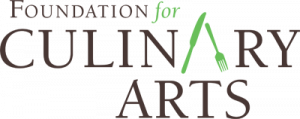
Laura Marcela Murillo Velazco Spring 2021 Blog
by Laura Marcela Murillo Velazco, August 7, 2021
Less than a month ago, I came back to the U.S. since my upcoming Summer classes will be conducted on campus. I honestly have to say I was reluctant with the idea of attending classes on campus; I was afraid I could get infected with the coronavirus. In addition to that, coming from a third-world country like Colombia, they started vaccinating senior citizens from 70 years and above in April. Meanwhile, the U.S. is vaccinating everyone over 18 years old was a huge cultural shock to me.
The same day I came back from Colombia, the CDC stated that every fully vaccinated citizen is allowed not to wear a mask either indoors or outdoors. I immediately thought it was a crazy idea and felt so unsafe. I wanted to go back to Colombia and be surrounded by people wearing masks, doing social distancing. Any other measures to protect against Covid-19, and at the moment, I realized how behind Colombia was with their vaccination rate.
It did not make sense why the United States vaccination process was accelerated compared to Colombia or other low-income countries. After some research, I came across “Vaccination Inequality.” When the campaign for a vaccine against the coronavirus began, health authorities knew that it would be a pitched battle between rich and poor. But few imagined that low-income countries would be at the mercy of donations from high-income countries or that inequality would be so great and last so long. Low-income countries have vaccinated just 1% of their population, compared to 55% in the U.S. and 25% worldwide. This gap is based on decisions taken at the beginning of the financing of purchases and the distribution of vaccines. Despite some countries being ahead with their vaccinations, others have not begun vaccinating their citizens not because they cannot purchase the vaccine but because there are no vaccines available.
To fight against vaccination inequality, WHO created a program called COVAX. This program consists of accelerating the search for an effective vaccine for all countries. At the same, it supports the creation of manufacturing capacities and buying supplies in advance so that 2000 million doses can be distributed equitably by the end of 2021. Under the COVAX program, high-income countries can donate vaccines to accelerate the vaccination process in other countries. In that way, the virus stops mutating and getting stronger but, more importantly, goes back to normal again.
Last, vaccination inequality is an excellent example of why we all should work together and support each other to overcome events like pandemics.




